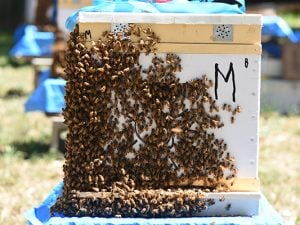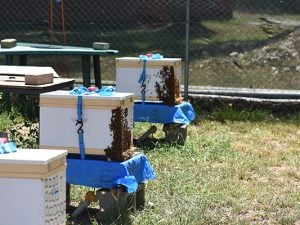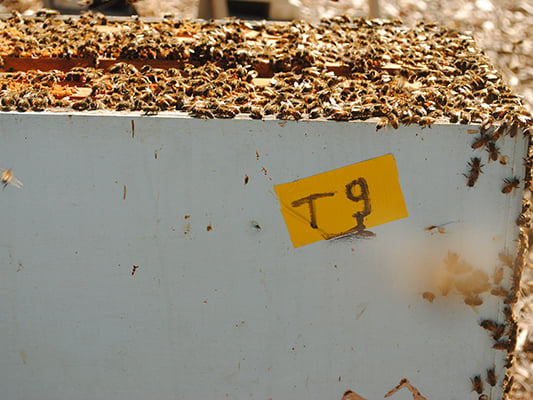What is the varroa mite and what does it do?
Varroa destructor is a small mite that parasitises honey bees, transmitting harmful diseases and ultimately killing bee colonies. When the mite was first introduced in California it wiped out 75% of feral bee colonies and 50% of the managed bee colonies.
Australia is the only country currently without Varroa. Even our neighbours from New Zealand have had to deal with the mite for over 20 years. But, given our geographical proximity to New Zealand and our trade of goods with countries that have the mite, there is a high risk of varroa outbreaks in Australia.
What research is being done to control varroa?
Scientists and beekeepers worldwide are researching the best ways to control the mite. Everywhere varroa has been introduced, the industry is trying to move from old, outdated treatments towards modern, efficient and safer control methods.
As a French scientist, I get very excited to work with bees in Australia. I mainly research the effect the varroa treatments have on the bees. Treatments all have side effects and we all, as beekeepers, care about our bees first. Australia is the best place to do this research: the wax is not contaminated by decades of various anti-varroa treatments, so I can isolate the effect that a specific product has on the bees.
I can also compare the health of hives treated with anti-varroa treatments to the health of hives not treated with anything. This way I can discover how much treated bees are affected compared to un-treated bees. I couldn’t do this in France, because hives left without treatments would almost certainly die. In Australia, I have studied various commercially available treatments, and compared their effects on bees at different seasons. (https://link.springer.com/article/10.1007/s13592-020-00837-3).




Some of the experimental hives being tested for the effect of thymol. (Images courtesy Théotime Colin)
Which treatments can we use if varroa is detected?
If varroa was to be found in Australia, we would need to rapidly treat all the hives in the area of introduction to try to eradicate it. There are many ways to do this, all with advantages and disadvantages, but a clear picture is emerging that different treatments work best at different seasons (https://www.sciencedirect.com/science/article/pii/S0034528817309773).
In spring, the queen can be caged for a few weeks, with a single brood frame left in the hive. All the mites will go onto this frame, which can be removed before the queen is released. Bee colonies should still then be able to grow quickly before the summer (https://www.tandfonline.com/doi/full/10.1080/00218839.2020.1793278).
In summer, amitraz treatments can be used through the warm months.
In autumn when temperatures cool down, tau-fluvalinate and thymol appear to have low negative impacts on the hives.
In winter, treatments with oxalic acid can be done without disturbing the hives.
In the meantime, biosecurity teams across Australia keep monitoring “sentinel hives” near ports and airports to detect any accidental introduction of Varroa. Hopefully, they will succeed in keeping Australia varroa-free.
Most of these methods have been used for decades overseas, and you can find some of the protocols in the references below.
References:
- Colin, T., Forster, C. C., Westacott, J., Wu, X., Meikle, W. G., & Barron, A. B. (2021). Effects of late miticide treatments on foraging and colony productivity of European honey bees (Apis mellifera). Apidologie, 1-19.
- Beyer, M., Junk, J., Eickermann, M., Clermont, A., Kraus, F., Georges, C., … & Hoffmann, L. (2018). Winter honey bee colony losses, Varroa destructor control strategies, and the role of weather conditions: Results from a survey among beekeepers. Research in veterinary science, 118, 52-60.
- Büchler, R., Uzunov, A., Kovačić, M., Prešern, J., Pietropaoli, M., Hatjina, F., … & Nanetti, A. (2020). Summer brood interruption as integrated management strategy for effective Varroa control in Europe. Journal of Apicultural Research, 59(5), 764-773.
Acknowledgements:
This article has been peer-reviewed by Nadine Chapman and Mark Page.



One comment, add yours.
Adriene
Thank you, I have just been looking for information approximately this topic for
a while and yours is the greatest I have discovered
so far. But, what concerning the bottom line? Are
you certain about the supply?